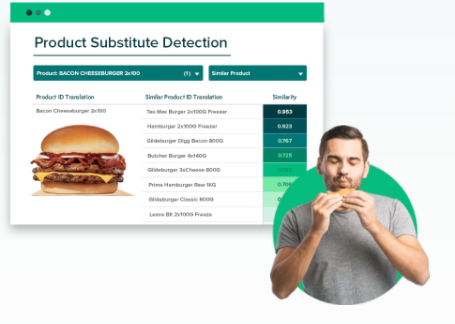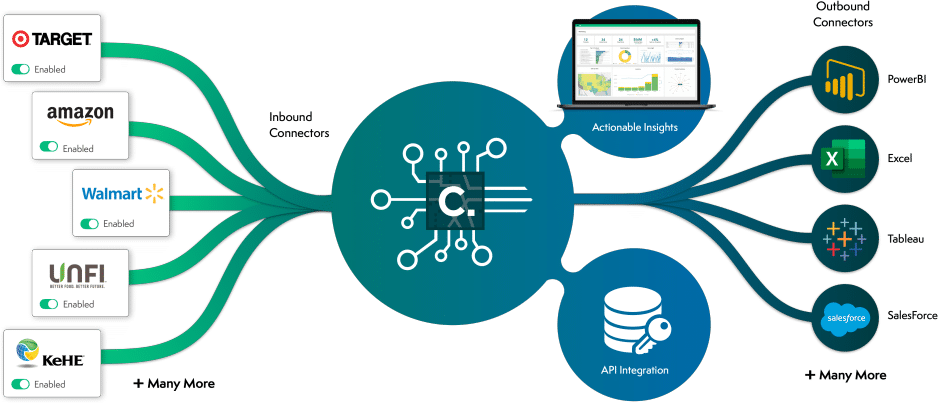2020 has been a chaotic and turbulent year for the food industry in particular. The COVID-19 pandemic was a shock to the food supply chain, forcing companies within it to move from gradual evolution to overnight transformation amidst rapid changes to product availability and consumer behavior. While businesses scrambled to achieve 10 years’ worth of plans for digital transformation in 10 months, the experience has made it clearer than ever that the status quo needs to change.
Our retail supply chain is complex: in CPG alone there are over 200,000 companies trading with each other, 3.7 million farms, and 45,000 grocery stores. There is incomplete, disconnected information between them, which impedes the supply chain’s agility and ability to meet consumer demand, resulting in both shortages and tremendous waste simultaneously. But as we’ve seen, combating the problem has gone from a nice-to-have to a need-to-have.
We have the opportunity to transform CPG commerce from a disjointed web into a seamless programmatic commerce model that facilitates collaboration between all trading partners with unified, real-time data. This model will proactively keep ahead of rapidly evolving consumer behavior, identify disruptions, deploy resources, predict traffic across channels, track inventory, and replenish both virtual and in-store shelves at speed and scale. The result will be a supply chain that is truly data-led, consumer-first, predictive, agile, and resilient.
This might sound futuristic, but programmatic transformations have already occurred in the marketing industry – including at a previous company I founded together with Dag Liodden, Tapad. Programmatic advertising, or marketing via automated platforms, represented only 4% of digital advertising in 2010.
Tapad was among a small group of companies that created the standards to modernize digital advertising with a programmatic model. In the process, we transformed an industry that had previously been plagued by a lack of transparency into one with clear industry standards. And the entire industry was fortunate to reap the benefits: improved bottom lines, less manual work, unified standards, and a more even playing field. Ten years later, this is the primary way digital marketing is done: programmatic advertising is now 84% of all advertising, representing $68B in spend.
After selling Tapad and traveling the world with my family, I saw first-hand the paradox of people going hungry while food rotted in fields — and discovered that the food industry was plagued with inefficiency. The root of that inefficiency is slow-moving, inaccurate data. As one of the largest markets in the world with $8 trillion in revenue, the potential impact of a similar digital transformation in the food industry is massive.
What does programmatic commerce mean for food brands, retailers and consumers?
Although the food supply chain is quite different from marketing on the surface, there are similar pain points: siloed work, limited data sharing, manual labor, and wasted resources. Just as programmatic advertising automated the delivery of digital ads, programmatic commerce automates the delivery of food to consumers: it helps food brands and retailers anticipate what customers need, with implications for fulfillment, inventory management, production, and all other upstream activities including sales and marketing. Product assortments can be refined by location, inventory can be reduced and moved closer to point of purchase, and fulfillment can become automated. All while reducing out-of-stocks and improving shopper satisfaction.

Launching the first data platform for programmatic commerce
The possibilities are endless – defined only by our ability to turn trillions of bytes of data into insights that can be acted on across the supply chain. And that’s where Crisp comes in, an open data platform for programmatic commerce. As we recently announced, Crisp leverages big data to improve real-time, predictive understanding of both demand and supply opportunities and constraints, improve decision making, and allow faster course corrections when needed. We’ve already built integrations with retail portals connecting to 80% of the top grocery retailers and distributors in the U.S. and covering $500B in sales. With unified access to the data, Crisp’s cloud-based platform enables supply chain partners to easily and securely connect data sources to manage inventory, minimize waste, evaluate promotions, and maximize profitability.

When all supply chain participants work from a single version of the truth, supply chain resilience, efficiency, and optimization increase, leading to shopper satisfaction and profitable growth. Consumers experience more perceived value and relevance in their path-to purchase through customization and personalization across online and in-store shopping. This leads to a 40% more likely spending increase and higher likelihood of repeat purchases, increasing revenues for retailers and beyond. Better demand planning improves shopper satisfaction while avoiding lost revenue from out of stocks and minimizing inventory. Cost reductions abound at every step. Programmatic commerce sets the stage for precision marketing, increasing ROI with more effective targeting and messaging. Assortment optimization and category management heavily benefit from data — getting the right product mix between online and in-store alone can drive 2-5% category growth. And back to my motivation for starting Crisp — reducing food waste — BCG estimates that digital supply chain tools addressing supply chain efficiency can reduce food waste worth $120B annually.

It’s been a challenging year indeed, but there is ample opportunity ahead to build a food system that is stronger and more efficient than ever. Contact us and learn more about our work.